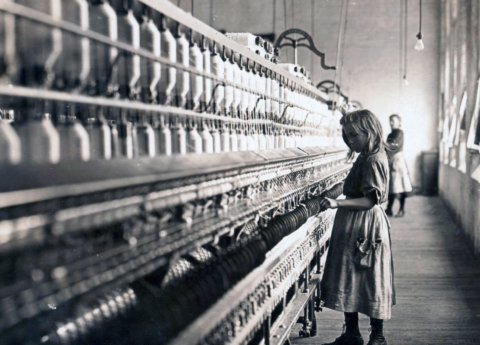A lack of good jobs in Kentucky – and an excess of bad jobs paying poverty wages – is holding back our economy. Despite nearly a decade of recovery from the Great Recession, a return of previously sidelined workers to the labor force and increasing educational achievement, too many Kentuckians are still struggling to make ends meet, and very few of us are getting ahead.
A full 30 percent of Kentuckians are working jobs that pay less than $12.50 an hour; fewer than half of us working in the private sector have an employer-sponsored retirement plan and just 44 percent have employer-sponsored health insurance. In economically distressed regions, even bad jobs are scarce.
Yet we often hear that the problem facing Kentucky is a lack of good workers. This “skills gap” explanation of Kentucky’s economic situation is not supported by the evidence, but you don’t have to take my word for it. When someone says Kentucky employers can’t fill jobs with good workers, ask “at what wage?”
Low, stagnant wages are strong evidence that there is not a pervasive skills gap. If there were, employers competing for skilled workers would be sweetening the pot by improving compensation. Yet even for Kentucky’s skilled workers – folks with more education – wages have been largely stagnant in recent decades. As noted by Dr. Peter Cappelli, Director of Wharton’s Center for Human Resources, “not being able or willing to pay the market price for talent does not constitute a shortage.”
One study, for instance, finds little evidence of labor shortages in Information Technology and clinical laboratory occupations – entry-level technical jobs often considered to be in high demand. Long-term openings were instead largely concentrated in the overnight shift, reflecting inadequate compensation for difficult working conditions rather than a skills deficiency.
One explanation for the dissonance between what employers are saying and what’s actually happening is that during the Great Recession and protracted recovery, employers got used to having their pick of the many candidates for every opening. They could afford to raise the bar on hiring criteria even as they kept recruiting efforts to a minimum and lowered wages and benefits for positions they sought to fill. Now, instead of adjusting hiring practices to reflect the smaller pool of available workers, employers are still trying to hire skilled workers at low wages and with antiquated search practices.
Regardless, hiring problems are not nearly as widespread or persistent as many allege. A peer-reviewed study by researchers at the University of Illinois and MIT found that nationally while three-quarters of the manufacturing industry claimed they were persistently unable to hire skilled workers, fewer than a quarter of plants had one or more production worker vacancies that lasted for three months or more. In the limited, specific cases where there are significant hiring challenges, the research shows the problem is not a lack of STEM -Science Technology Engineering and Mathematics skills, nor is it a lack of so-called “soft skills” (like communication, teamwork, attitude). Rather, hiring challenges in some manufacturing jobs are found to be related to a need for higher-level reading and writing skills.
While specific hiring challenges in individual industries could be addressed in part with on-the-job training, attacks on unions in recent decades — including Kentucky’s passage of a so-called right-to-work law and repeal of the prevailing wage law — undermine this traditional, effective means of worker training. And businesses themselves could step up more: employers are less willing than they were in the past to pay for training, with only 11.2 percent of workers receiving employer-sponsored training in 2008 compared to 19.4 percent of workers nationally in 1996.
Placing the blame for Kentucky’s economic woes on workers distracts from needed improvements in job quality. It’s time to raise our minimum wage, provide paid family and sick leave, protect workers from misclassification, and improve pay equity for people of color and women. These solutions are a good start to tackling the real problems facing our economy.
This column ran in the State Journal on September 19, 2018.



